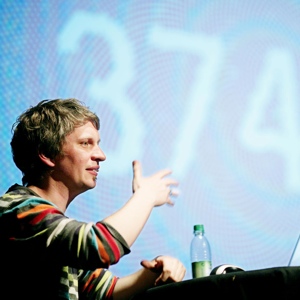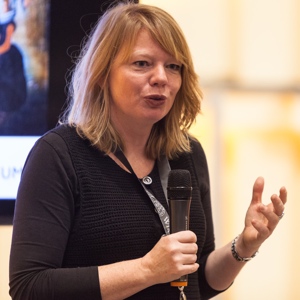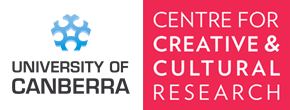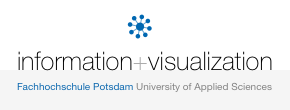Exploring Cultural Collections with Visualization
With the progressing digitization of cultural artifacts, there is a growing interest in exploring collections with other means than traditional search interfaces. This workshop brings researchers and practitioners together from art, design, humanities and science to explore the space between information visualization and exploration of digital collections.
On the one hand, cultural institutions are experimenting with new visual interfaces to showcase their collections by visualizing artefacts along diverse dimensions; on the other hand humanities scholars are developing methods for digital scholarship using visualizations for literary analysis, cultural analytics, and digital archaeology. These developments are creating new opportunities for rethinking the way with which digital collections are displayed, analyzed, and explored. While domain-specific considerations may differ substantially when designing interfaces for library catalogues, historical archives, or personal collections, there are recurring themes and challenges that touch on many key aspects of digital libraries, including information seeking, user experience, interaction design, and increasingly information visualization.
Goals and Outcomes
During the workshop we will take stock of current developments in visualizing cultural collections and foster discussion on open research challenges and future directions for this emerging field of practice. We plan to discuss the following aspects, but encourage discussions on related topics.
Information seeking and discovery
Visual interfaces are geared towards more exploratory activities in contrast to goal-oriented search. How can exploratory approaches be complementary to or extensions of search? What is the place for search in exploration?
Design decisions and emerging conventions
With a growing number of visual interfaces for collections, we are interested in capturing participants’ views on the recurring and diverging design decisions for the digital display and interaction with artefacts. Building a taxonomy of these design decisions and conventions can improve understanding of this research area.
Collection and artefacts
When visualizing digital collections, there are two main vantage points: an entire collection and the individual artefact. How do these perspectives come together when designing for particularly large collections?
Visualization for exploration
Visualization research largely focused on analysts. What are key factors to take into account when using visualization to explore cultural collections? What are strategies to enable visual exploration for the masses?
Evaluation
As visualization is introduced to support exploration in diverse application areas, how can we evaluate how successful these visual interfaces are? Related questions deal with the study of effectiveness, usefulness and engagement of such interfaces for exploring digital collections.
Keynote Speakers

Moritz Stefaner
Truth & Beauty operator
Piotr Adamczyk
Google Cultural Institute
Aaron Straup Cope
Cooper Hewitt
Lizzy Jongma
Rijksmuseum
Presentations
Papers
Robert Warren and David Evans
3D virtual worlds as search, discovery and retrieval engines
Mark Michael Hall
From Searching to Using: Making Sense of Digital Cultural Heritage Collections
Georgina Hibberd
Metaphors for discovery: how interfaces shape our relationship with library collections
Katja Rogers, Uta Hinrichs and Aaron Quigley
It Doesn't Compare to Being There: In-Situ vs. Remote Exploration of Museum Collections
Giulio Fagiolini, Paolo Ciuccarelli and Lei Yang
A Visual Exploration of the Reciprocal Image of Italy and China through Search Engines
Kim Albrecht, Marian Dörk and Boris Müller
Culturegraphy
Not able to participate:
Tom Cheesman, Kevin Flanagan and Robert S Laramee
Visualizing Variation in Collections of Translations and Adaptations of Cultural Heritage Texts
Posters
Pim van Bree and Geert Kessels
Traiblazing, Object-Oriented Navigation in nodegoat (Poster)
David Murphy, Laura Mellett, Cathal Hoare, Adrian O'Riordan and Humphrey Sorensen
Facilitating Researchers with Visualizations of a Digital Cultural Heritage Site (Poster)
Alex Butterworth
On the growth of my own mind: Visualising the creative process behind Wordsworth’s autobiographical epic, The Prelude, in multiple contexts (Poster)
Jaume Nualart and Gabriela Ferraro
Crossreads, towards a rhizomatic narrative
(Poster)
Workshop Plan
This workshop will run for 1.5 days and is targeted for 20-30 participants. We are inviting researchers and practitioners from art, design, humanities, and science that are actively engaged with the visual exploration of digital collections.
The workshop takes place at City University London, Northampton Square, London EC1V 0HB
in room A214, College Building (building A on this map).
Thursday, 11 September 2014
1:00pm Welcome
1:15pm Keynotes: Aaron Straup Cope & Lizzy Jongma
2:25pm Break
2:40pm Panel on institutional landscape and innovation
3:15pm Posters
4:00pm Paper session #1
5:30pm Social event (The Blacksmith & The Toffeemaker)
Friday, 12 September 2014
10:00am Keynotes: Moritz Stefaner & Piotr Adamczyk
11:10am Break
11:25am Panel on industry and individual practice
12:00pm Demos
1:00pm Lunch
2:00pm Paper session #2
3:00pm Break
3:15pm Paper session #3
4:15pm Closing discussion
5:00pm Goodbye
After the workshop is over, presented papers and posters will be archived, together with documentation of the workshop. Depending on interest among workshop participants, we will start planning for a workshop report or special issue.
Participation
We invite two types of submissions related to the workshop's topics: papers and posters.
Papers should not exceed 4 pages and poster abstracts should not exceed 2 pages.
Both types of submissions should be formatted in the ACM SIG Proceedings style.
Please send in your submission via the EasyChair system.
Accepted submissions will be published on this website and on the conference USB stick.
If you intend to participate, but have not submitted a paper or poster, please share research in progress in the form of an interactive demo, paper sketches or blue-sky ideas to discuss and develop with other participants.
Workshop participants need to register through the DL2014 website.
Important Dates
21 July, 2014 – Paper and poster submission due
4 August, 2014 – Notification of acceptance
11-12 Sept., 2014 – Workshop at DL2014 in London
Organizers
Marian Dörk (@nrchtct), Potsdam University of Applied Sciences, Germany
Mitchell Whitelaw (@mtchl), University of Canberra, Australia
Steven M. Drucker, Microsoft Research, USA
Florian Kräutli (@fkraeutli), Royal College of Art, London, UK
If you have any questions, please email the organizers.
Programme Committee
- Dominikus Baur, Munich, Germany
- Jenny Bunn, University College London, UK
- Martyn Dade-Robertson, Newcastle University, UK
- Nathalie Henry-Riche, Microsoft Research, USA
- Uta Hinrichs, University of St Andrews, UK
- Nadav Hochman, University of Pittsburgh, USA
- Mia Ridge, Open University, UK
- Tom Schofield, Newcastle University, UK
- Stephan Thiel, Studio NAND, Berlin, Germany
- Alice Thudt, University of Calgary, Canada
- Curtis Wong, Microsoft Research, USA
Sponsors
Header Images
Photos: Archives by Marino González, The Wet Collections by peterned, Untitled by angela larose.
Screenshots: Australian Prints Bohemian Bookshelf Fluid Views Manly Images Selfiecity Phototrails.

